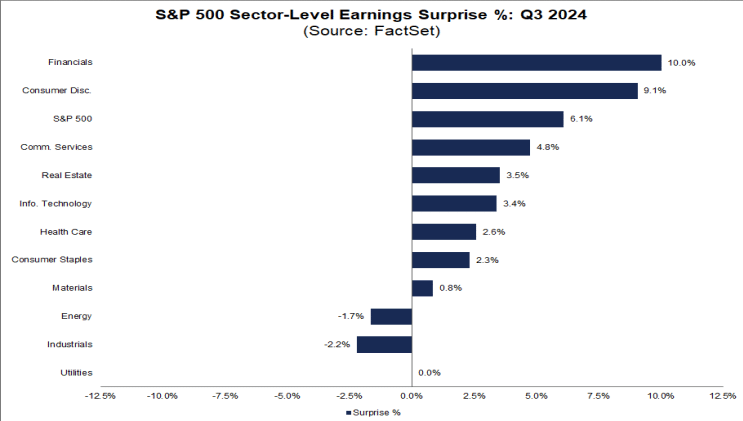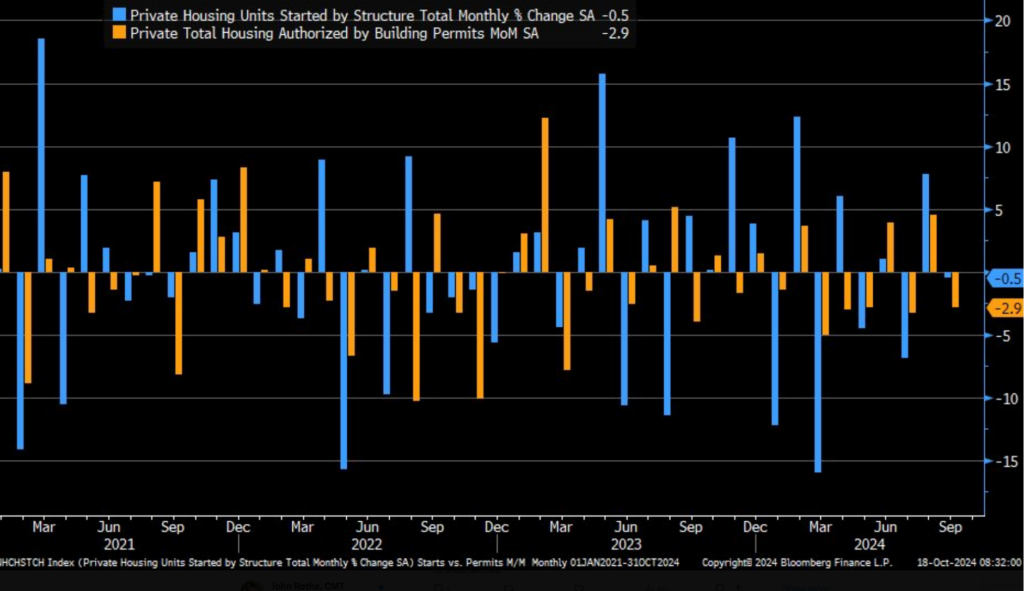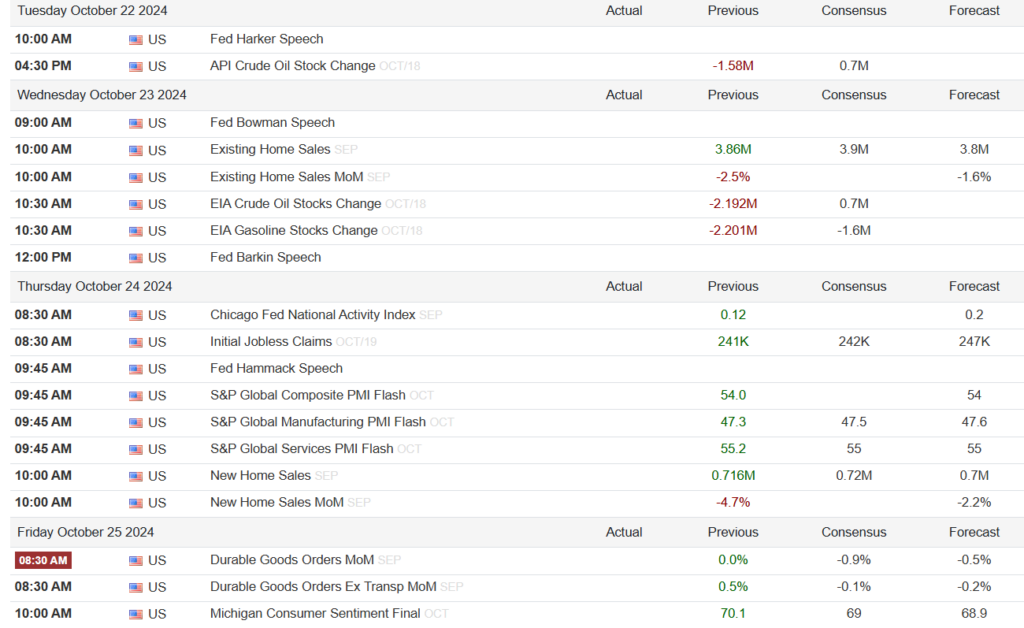sThe Week in Charts
Market Recap
For the week ending October 18, 2024, U.S. equity markets demonstrated continued strength, with the Dow Jones Industrial Average (DJIA), S&P 500, and NASDAQ all recording their sixth consecutive week of gains.
This positive momentum was largely driven by better-than-expected corporate earnings and encouraging economic data.
However, the Russell 2000, which tracks small-cap companies, has not matched the year-to-date performance of its large-cap counterparts, despite outperforming for the week.
Earnings Season Boosts Investor Confidence
The ongoing earnings season played a crucial role in maintaining bullish sentiment. Approximately 70 companies from the S&P 500 reported their results, with an impressive three-quarters surpassing Wall Street’s expectations.

Source: FactSet
This wave of strong earnings underpinned gains across various sectors, with financial and healthcare names contributing significantly to the DJIA’s rally. Both the DJIA and S&P 500 reached new highs during the week, benefiting particularly from robust performance in the financial and consumer discretionary sectors.
Economic Data Supports Market Optimism
September’s retail sales data indicated resilient consumer spending, further fueling the upward trajectory of major indices. However, it’s worth noting that the Russell 2000 continues to lag behind in year-to-date performance, reflecting the increased sensitivity of small-cap stocks to economic shifts and persistently high interest rates.
Housing Market Shows Signs of Cooling
The U.S. Census Bureau and the U.S. Department of Housing and Urban Development reported a decline in housing starts and building permits for September 2024.

Source: Bloomberg
Privately-owned housing units authorized by building permits decreased 2.9% from August and 5.7% from September 2023. Housing starts also saw a slight decline of 0.5% from August and 0.7% from the previous year. However, single-family housing starts showed a modest increase of 2.7% from August.
Import and Export Prices Decline
The U.S. Bureau of Labor Statistics reported that prices for U.S. imports decreased by 0.4% in September, the largest one-month drop since December 2023. This decline was primarily driven by lower fuel prices, which offset higher non-fuel prices. Export prices also fell by 0.7% in September, following a 0.9% decline in August.
Over the past year, import prices edged down 0.1%, marking the first 12-month drop since February 2024. Export prices saw a more significant decline of 2.1% over the past year, the largest 12-month decrease since January 2024.
What’s Going On In Your Portfolio?
 Client portfolios are weighted towards growth, as we take advantage of lower prices in various sectors, such as technology.
Client portfolios are weighted towards growth, as we take advantage of lower prices in various sectors, such as technology.
However, volatility stops are still in place in case of a spike in volatility before or after the US Presidential election.
Bond portfolios remain fully invested in High-Yield bonds. The BofA Merrill Lynch High Yield Index continues to rise – which has historically been a good sign for the stock market.
Upcoming Economic Data to Keep an Eye On

Source: Trading Economics




